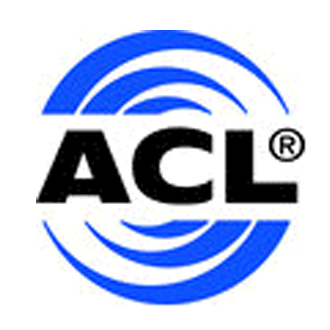ACL Race rod bearings
STD 0.00mm
There is no final silvery tin flash applied to these bearings. A silvery tin flash for appearance and long term corrosion protection, as applied to the regular aftermarket bearings, can under high loading and heat, move, with the plate migrating and causing high spots on the back of the shells, and distorting the bearing.
For this reason the ACL RACE Series performance bearings do not have a cosmetic silvery tin flash applied, so there is no risk of any overlay plate movement on the backs of the shells, giving better bearing to housing contact and better bearing performance and function.
Bearing Design Enhancements:
Crush increased for:
Improved bearing retention from higher radial contact pressure. Locks the bearing into the housing. More effective heat dissipation through improved thermal transfer.
Bearing Eccentricity
Definition: Gradual reduction in wall thickness between the crown and parting line.
Race Series performance engine bearings feature increased eccentricity to improve shape adaptation to compensate for bore distortion at high speed operation.
Assists in the formation of hydrodynamic oil film.
Bearing Construction:
- 1 - Steel strip.
- 2 - ACL sintered copper-lead-tin alloys provide a tough structure capable both of resisting high compressive loads and providing excellent adaptability.
- 3 - A nickel barrier to preserve the optimum metallurgy of the overlay under all operating conditions. ACL’s superior quality construction and control in electroplating eliminate potential overlay flaking.
- 4 - The lead-tin-copper overlay used by ACL consists of approximately 90% lead, 9% tin and 1% copper. Overlay thicknesses are nominally .0005″ – .0007″ for most automotive applications.
Installation of ACL RACE Series bearings – Oil Clearances
Oil clearances are most accurately measured using micrometres and bore gauges. Bearing wall thickness measurements are taken at 90 degrees to the parting line (i.e. at the crown of the bearing) using a micrometre with a ball anvil, for use on the curved ID of the bearing. Vertical oil clearance is best measured by assembling the bearing in its housing, with bolts torqued to specification, then using a bore gauge measure the assembled ID of the bearings at 90 degrees to the parting faces. The mating crankshaft journal size is measured, and subtracting this measurement from the bearing ID bore size, gives the assembled oil clearance.
ACL RACE bearings can be assembled with .00075-.001” per 1” of journal diameter (0.020-0.025mm per 25mm of journal diameter) plus .0005” (0.013mm).
As an example for a 2.000” (50mm) journal diameter, 2.000 x .001 = .002 + .0005 = .0025” (50/25 x 0.025= 0.050 + .013 = 0.063 mm)
Bearings should not be polished with abrasive pads or paper, on the bearing surface, to change the oil clearance.
Product Safety Information
Eugen Schaper
Schaper Automotive
Paul-Lincke-Str.1f
30890 Barsinghausen
Germany
info@schaper-automotive.com


